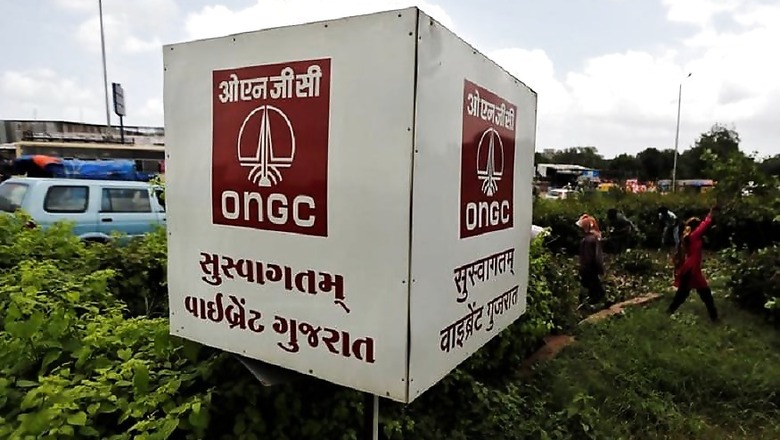
views
New Delhi: The 12.5 per cent cut in domestic natural gas price is credit negative for India's biggest producer ONGC as its earnings will fall by over Rs 1,400 crore, Moody's Investors Service said on Thursday.
On September 30, the government announced a 12.5 per cent reduction in domestic natural gas price to USD 3.23 per million British thermal units (mmBtu) from USD 3.69 per mmBtu (on a gross calorific value basis).
This is the first reduction in gas price in India since April 2017.
"The price decrease is credit negative for Oil and Natural Gas Corporation Ltd (ONGC) because its revenue and earnings from the gas business will fall by around Rs 1,460 crore.
"The decline is equal to 0.3 per cent of the company's expected consolidated revenue and around 2 per cent of consolidated EBITDA for fiscal 2020, which ends on March 31, 2020," Moody's said in a note.
The decline in natural gas revenue and earnings will have a limited effect on ONGC's metrics for fiscal 2020 because its gas business is small compared with its total upstream business, it said.
"For the year ended March 2019, ONGC derived only about 17 per cent of its revenue (excluding downstream operations) from gas, with most of its revenue coming from the sale of crude oil (73 per cent)," Moody's said.
The reduced price is applicable for October 1, 2019 to March 31, 2020.
Prices are calculated using a formula implemented in November 2014 and domestic natural gas prices are revised every six months.
Gas prices in India are determined by taking a volume-weighted annual average of the prices prevailing in Henry Hub (US), National Balancing Point (UK), Alberta (Canada) and Russia. ONGC is India's largest integrated oil and gas company, accounting for 75 per cent of crude oil and natural gas production by volume, and 17 per cent of domestic refining capacity.
The company recorded consolidated oil and gas production of 1.3 million barrels of oil equivalent (boe) per day for the fiscal year ended March 31, 2019. As of June 30, 2019, ONGC was 64.25 per cent owned by the government of India, "which has a significant influence on the company's financial policies and strategy," Moody's added.
Separately, rating agency Icra said the gas price revision is marginally positive for urea sector as the pooled price for the fertiliser sector is expected to moderate by USD 0.19 per mmBtu.
"This should result in lowering of the cost of production and subsidy receivables for the urea players," Icra said.
Natural gas is a key raw material for manufacturing of urea and comprises nearly 70 per cent of the total cost of urea production. For the fertiliser sector, nearly 42 per cent of the gas requirement is met through domestic gas, while the remaining is met through R-LNG imports.
The industry is supplied gas at pooled pricing, which takes into account the weighted average of domestic and R-LNG prices. K Ravichandran, Senior Vice-President & Group Head, Corporate Ratings, Icra said, "As per our estimates, the cost of production of urea changes by around Rs 1,600-1,800 per ton for every USD 1 per mmBtu change in the pooled gas price. As a result of the current revision in the domestic gas price, the subsidy outgo for the government would reduce by Rs 400 crore in H2 FY2020."
With the share of domestic gas falling in overall consumption mix for fertiliser sector, the impact of the change in domestic gas price has also been diminishing, he said, adding that nearly 58 per cent of natural gas demand in the fertiliser sector is being met through long term R-LNG, wherein the prices are governed by crude oil prices.


















Comments
0 comment